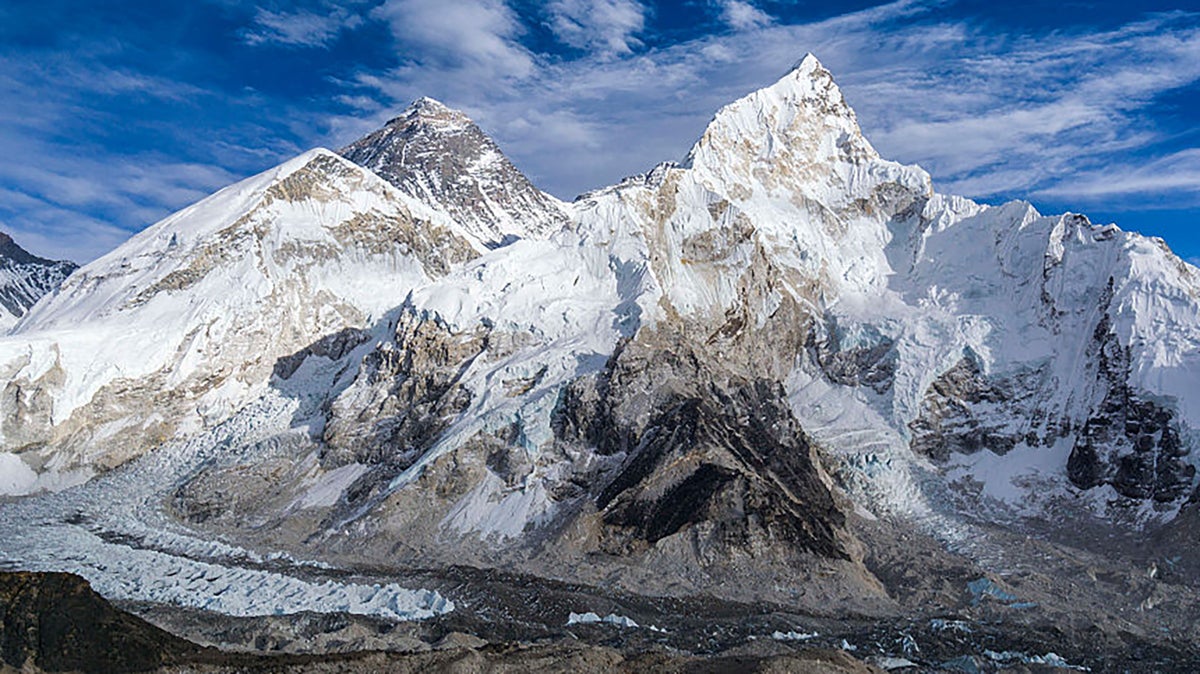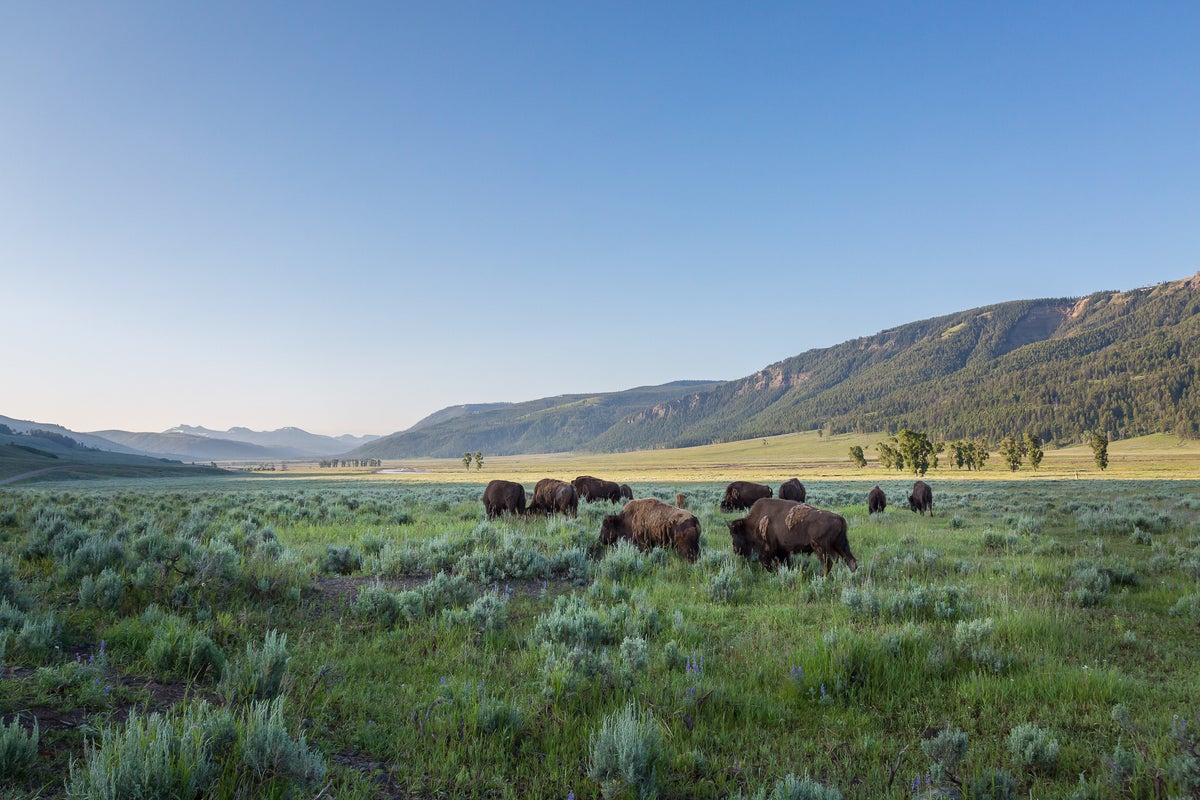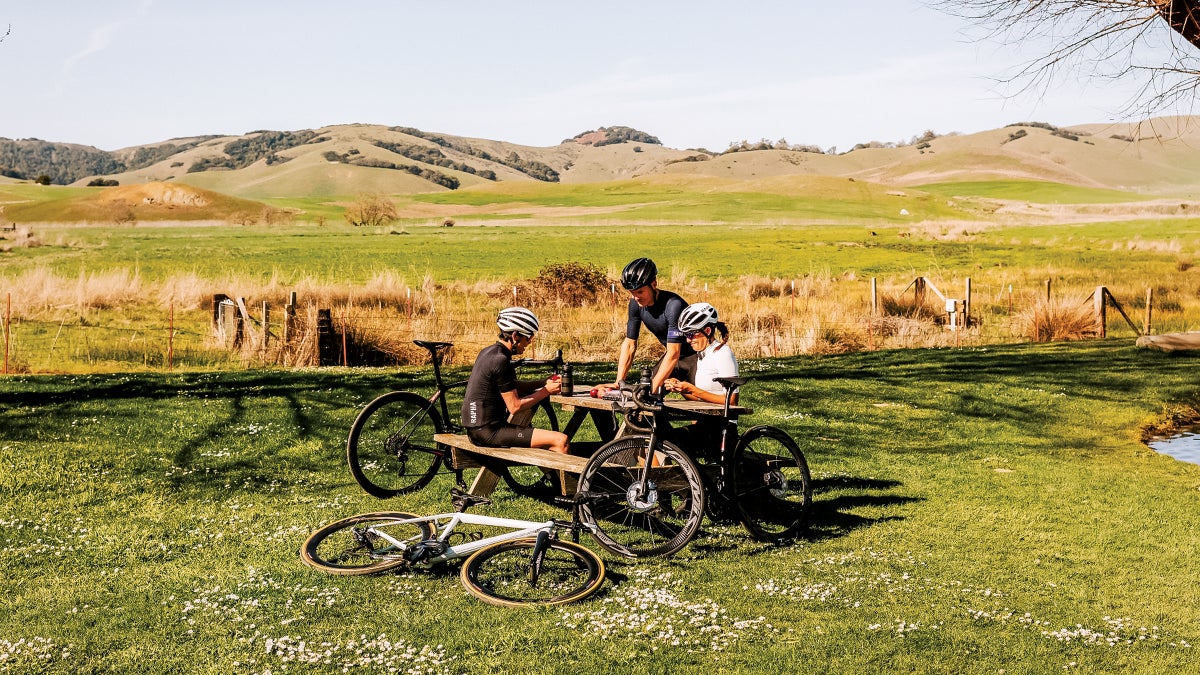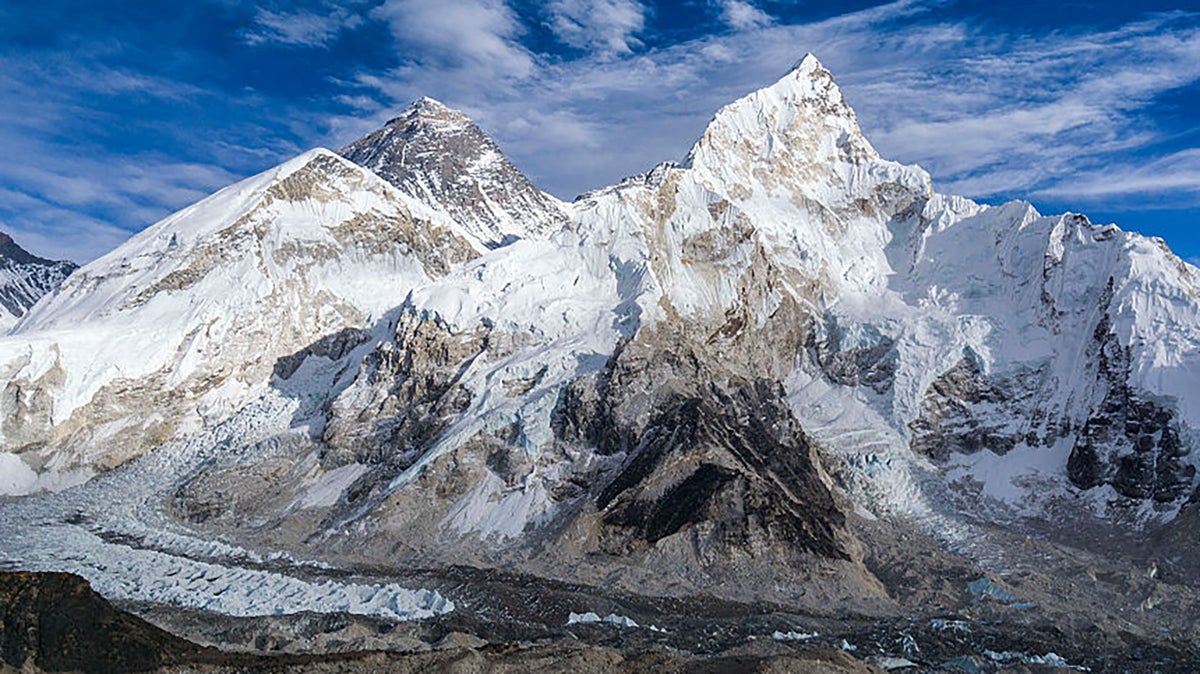
Mount Everest holds a special aura for hardcore climbers and casual fans of the sport alike. Every year, the world’s highest peak attracts several hundred climbers who attempt to reach the top. But not everyone is familiar with the dynamics on the mountain, the guiding industry, or even the route to the top. Below, we answer a handful of familiar questions that we often receive from Outside readers (and also Outside editors) about Mount Everest.
Do you have a question about Mount Everest? Email them to adventure@outsideinc.com. And you can check out our Everest coverage from Base Camp here.
What Is Mount Everest Season?
Yes, there are 365 days in a year. But only a handful of those days produce calm, clear, and (relatively) warm enough weather on the summit of Mount Everest for humans to exist. And the only time when the top of Mount Everest consistently experiences multiple days of these conditions—what climbers call a “weather window”—is in mid to late May. During a typical year, a few weather windows may occur during this brief stretch.
That’s why, in the international mountaineering world, late April through May is known as “Mount Everest Season.” It’s when climbers arrive in Base Camp, complete their acclimatization hikes onto the mountain, and then push for the top.
According to The Himalayan Database, a website that tracks Himalayan climbing in Nepal, May 23 is the most popular date for reaching the summit. Since 1950, 1,712 climbers have reached the top of Mount Everest on that date. May 21 is the next busiest day with 1,487 successful summits.

“All mountains in Nepal are best climbed in spring because there is less snow,” says Billi Bierling, who operates The Himalayan Database. “People think there’s so much snow, and yes there is, but not as much as there is during the summer monsoon.”
Climbers avoid Mount Everest in the summer because, in early June, monsoons sweep off the Bay of Bengal into the Himalayas. These storms dump heavy snowfall on the peak and buffet the top with dangerous winds. In the winter, the peak is simply too cold and windy.
Some climbers have scaled Mount Everest in the fall, when a shorter weather window sometimes opens up. But the finicky weather usually makes for a shorter window. According to Bierling, only 287 climbers have ever reached the top in the fall.
“The weather window is just too small in the fall,” Bierling said. “The monsoon is sometimes dragging on, and then the Jet Stream hits Everest earlier than other 8,000-meter peaks because it’s higher.”
But of course the lack of suitable days to climb Mount Everest is what creates those dramatic photos of traffic jams on the peak—hundreds of climbers are pushing for the top at exactly the same time. If you were to snap a photo in the same location a day later, the trail might be empty.
Do Climbers Take the Same Route Every Year?
Yes—the lion’s share of Mount Everest climbers follow the same approximate route to the top. The South Col route from Nepal and the North Ridge route from Tibet represent the paths of least resistance on both sides of Mount Everest, and thus, they are the most common ways to get to the top. Think of them as the proverbial green circle runs at your local ski resort.
You can check out the South Col route from Nepal above.
Both routes make slight deviations from year to year based on snowfall, avalanches, and shifting ice in the Khumbu Icefall. Each year, sherpas and other mountain workers fix safety ropes along the route to the summit, and then guides and their clients use these safety ropes to reach the top. And as Mount Everest has become dominated by commercial ascents, these routes have only grown in popularity, since most of the climbers are not hardened alpinists.
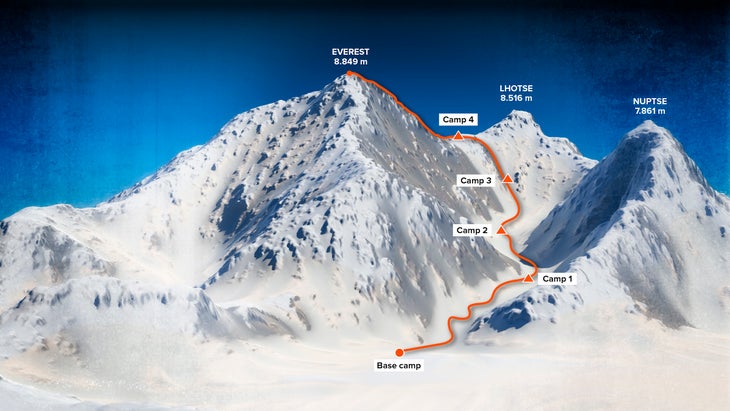
Over the years, more experienced climbers have taken more challenging routes to the summit that require true Alpine-style climbing, such as ascending the Hornbein Couloir, or the Kangshung Face. In 2022 French climber Marc Batard attempted a new approach that circumvented the Khumbu Icefall. And for the last few years, German Alpinist Jost Kobusch has attempted to scale Everest via the West Ridge. These are black diamond-level routes—only attempted by seasoned climbers.
How Much Harder Is it to Climb Mount Everest WITHOUT Supplemental Oxygen?
Here’s how Dr. Jon Kedrowski, a four-time Mount Everest climber, describes climbing the peak without using supplemental oxygen. “It would be as if I pulled your lower lip over your head and then kicked you in the stomach,” he said. “It hurts. Everything hurts.”
It’s no secret that the human body functions better in oxygen-rich environments and worse in oxygen-poor ones. At Mount Everest Base Camp, at 17,500 feet, there’s approximately half as much oxygen in the air compared to sea level. Atop Mount Everest, it’s approximately 33 percent of sea level.

Using supplemental oxygen effectively lowers the perceived elevation by giving your body more to absorb with each breath. The amount of oxygen in each breath—the “flow rate” of the oxygen mask—can add significant amounts of oxygen to your body.
Kedrowski, who climbed 26,781-foot Manaslu without oxygen and attempted Everest without oxygen in 2015, said that every bodily movement at that altitude can push your body to exhaustion. You have to hike slower and make every bodily movement count.
“You have to learn how to stand, how to stabilize your body, and how to optimize your movement efficiency,” he said. “Even a little task like reaching your hand back to grab a water bottle can take your breath away and make you feel like you’re going to pass out.”
How Much Does it Cost to Climb Mount Everest?
In his annual pricing estimate roundup, longtime Everest chronicler (and Outside contributor) Alan Arnette pegged the 2025 price range between $35,000 and $123,000 for climbing Mount Everest from Nepal.
Even a bare-bones expedition has costs you cannot avoid: a climbing permit from the Nepali government costs $11,000, payment to rope fixers and Nepal liaison officers is a few grand, and then of course you need to hire a yak or two to get your crap to Base Camp.
So, It’s Just a Bunch of Rich People Up There, Right?
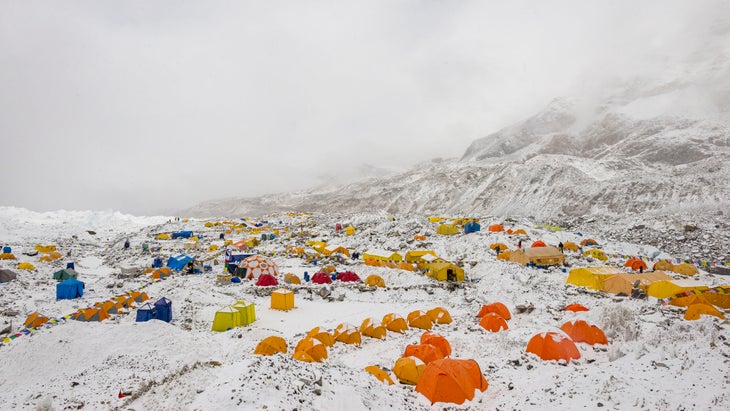
Not at all. The vibe at Mount Everest Base Camp is way more scrappy climber than Prada. Some expedition operators do cater to high-end clientele and feature creature comforts like fancy espresso machines and private chefs. You can pay upwards of $100,000 for a trip like this. But these climbers are in the minority at Everest Base Camp.
“In 2012, I spent $29,000 on my first Everest trip,” Kedrowski said. “I was working as a ranger on Mount Rainier at the time and a ski guide. I paid some up front and put the rest on my credit card.”
Kedrowski said he found ways to cut costs on his ascent by carrying his own gear up to Camp I and Camp II.
“It was still an expensive endeavor, and rightly so,” he added.
Is There Any “Technical” Climbing Involved?
Not really. Think of the ascent of Mount Everest as a big, long, multi-day hike at extreme altitude, with sections of fairly dangerous exposure. There are tricky sections in the Khumbu Icefall, but the route builders erect ladders, and also fix safety ropes and anchors to help climbers pull themselves up.
“The only person experiencing true technical climbing is the first person leading the pitch,” Kedrowski said. “Last year there was one vertical wall in the Icefall but after so many people climbed it you’d barely rate it fifth-class.”

Why Do People Climb Mount Everest?
Throughout my time in Base Camp I’ve learned that everyone has their own reason for climbing. These explanations vary greatly. Sure, there’s some ego driving climbers, and everyone is asking themselves, “what am I capable of?”
But there’s also an infectious community of people who ascend these mountains, and for some, it’s this camaraderie that motivates them. I’ve met a lot of like-minded people who enjoy pushing themselves physically and mentally. Throughout my journey here I’ve decided that asking this question is like asking “why do people join CrossFit gyms?”
Throughout his time guiding, Kedrowski says he’s come across clients motivated by several reasons. “One client was working through a battle in his own life and he was trying to do something he could be proud of,” Kedrowski says. “He had worked really hard to change his life, and he had put in the time and training so that he felt he deserved to be on Mount Everest.”
Want to stay up on Outside’s 2025 Everest Season coverage? Sign up for our Outside: Dispatches from Everest newsletter.

Ben Ayers is a filmmaker, journalist, and adventurer who splits his time between Vermont and Nepal. In 2022 and 2024 he chronicled the Mount Everest climbing season for Outside.
The post What Is Mount Everest Season? We Answer Your Questions About the World’s Highest Peak. appeared first on Outside Online.











